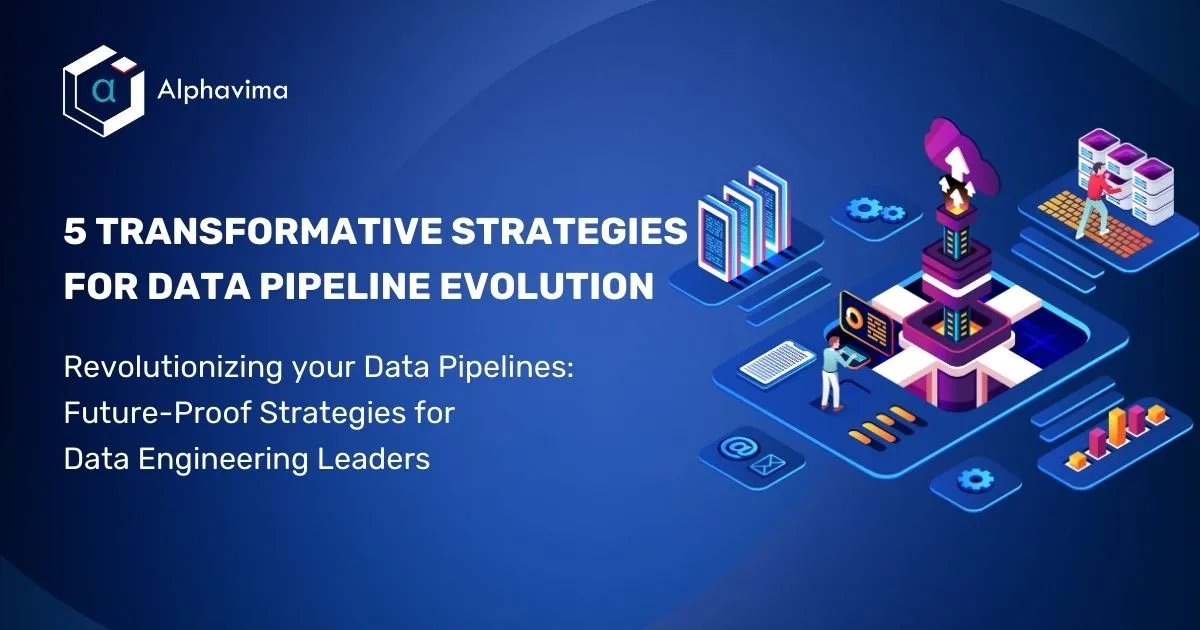Blog
5 Future-Proof Strategies for Data Engineering Leaders
03 Jan 2024

In the ever-changing tech world, data engineering leads the way in helping businesses use data well. IT leaders must make sure data pipelines are not just good now but ready for the future. This guide gives tips and ideas to upgrade data pipelines for the needs of future data-focused businesses.
Top of Form
The Evolution of Data Engineering
1. Historical Perspective: This involves understanding the shift from traditional ETL (Extract, Transform, Load) processes to modern, scalable data pipelines. It's about recognizing the journey data engineering has undergone, the tools/methods used before, and how they've evolved to meet today's demands.
2. Technological Advancements: This point explores the influence of cloud computing, AI, and ML on reshaping data engineering practices. It focuses on how these technologies have transforms the field, making it more dynamic and adaptable.
Challenges in Data Pipeline Development
1. Scalability: Addressing the need for scalable infrastructure involves discussing the strategies required to manage the overwhelming growth of data. It's about creating systems that can handle increasing data volumes without compromising performance.
2. Data Quality and Governance: Tackling issues related to data integrity and compliance involves ensuring that the data collected is accurate, consistent, and meets regulatory standards. It's about implementing measures to maintain data quality and governance throughout the pipeline.
3. Real-time Processing: To meet the need for quick data handling, we must create systems that process information in real-time. This includes minimizing delays and making faster decisions using the most current data available.
Future-Proof Strategies for Data Engineering Leaders
1. Embracing Cloud-Native Solutions
- Leveraging cloud services for agility, scalability, and cost-effectiveness.
- Incorporating serverless architectures for seamless scalability and reduced maintenance overheads.
- Utilizing Kubernetes to organize and manage data-heavy applications.
2. Implementing DataOps Principles
- Introducing a collaborative and automated approach to data pipeline development and activation.
- Using CI (Continuous Integration) / CD (Continuous Delivery) practices to ensure continuous integration and delivery of data pipelines.
- Adopting DevOps methodologies customized for data engineering workflows.
3. Investing in Streamlined Data Governance
- Implementing robust data governance frameworks to maintain data quality, security, and compliance.
- Leveraging metadata management tools for enhanced data history and traceability.
- Establishing clear policies and procedures for data access and usage.
4. Harnessing the Power of Data Catalogs and Metadata
- Setting up centralized data catalogs for comprehensive data discovery and understanding.
- Using meta data to automate tasks like updating structures and tracing where data comes from.
- Integrating AI-driven metadata tools for enhanced data insights and recommendations.
5. Integrating Artificial Intelligence and Machine Learning
- Using AI and ML algorithms to optimize data pipelines for predictive maintenance and performance enhancement.
- Implementing system that can detect and fix problems in how data is handled before they become big issues.
- Top of Form
- Leveraging AI-driven automation for data cleansing and improvement.
Statistics and Insights
- Gartner predicts that by 2025, most business data (about 75%) will be made and managed away from the usual data centers.
- Forbes Insights found that 74% of businesses think that organizing data better helps them make smarter choices and trust their data-driven ideas more.
Conclusion
In today's world, data is crucial for businesses. Data engineering leaders need to adjust to changes by using cloud-based solutions, following DataOps principles, focusing on data rules, using metadata smartly, and including AI. These adjustments help data pipelines keep up with the fast-changing digital economy. By doing this, IT leaders can guide their organizations toward a future where data is key to success, promoting innovation and keeping a competitive edge.
